-
Posts
2,406 -
Joined
-
Last visited
Content Type
Profiles
Forums
Gallery
Events
Articles
Posts posted by Ian
-
-
The wear & colouration give the impression that the city is on fire! Very nice, I love city views & architecture too, the older the better.
Sometimes scanned images aren't true portrayals. However in this case the jeton really does look like that in the flesh.
You can probably tell that i'm a bit of a bit of a sucker for city views / architectural depictions myself. Actually i'm a bit of a sucker for just about anything coin / medal / jeton in origin.

-
resurecting this thread due to a recent aquisition, a jeton issued for Rene Robert, Mayor of Angers in 1720. The obverse is his coat of arms, but more interestingly (for me anyway), the reverse shows a view of the city....or rather a view of the cathedral and the tower of Saint-Aubin. Not in particularly good nick, but still collectable.
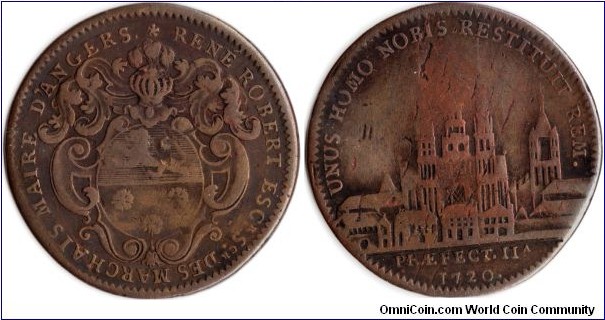
-
another couple of medals new to my collection
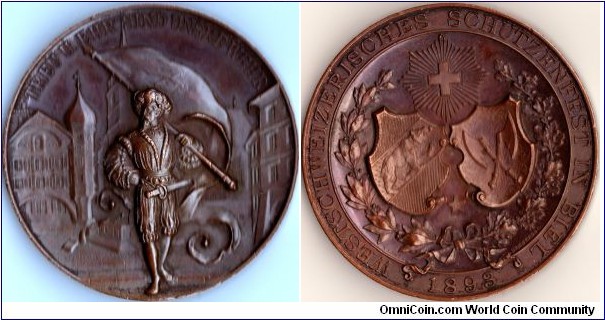
Biel 1893 this one struck in bronze (800 minted in bronze)
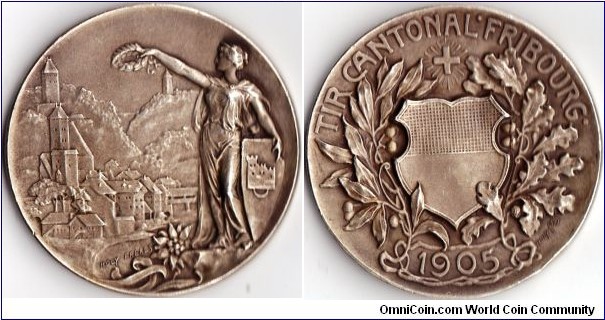
Fribourg 1905 struck in silver (300 minted).
-
.....but before we get carried away, there is still no 1559.
-
As an FYI, the 1840 Solothurn is a jeton rather than a shooting medal. It was not awarded as a shooting prize. It is R434d, I beleive it is the 'd' variety, 23mm and 4.3 grams. It is considered to have a rarity of R according to Richter. I too have this jeton and it is one of my favorites! I also have the 1949 medal, I appreciate the shape and I have several other 1949 Chur pieces.
Thanks for the info. Much appreciated.
I'm intrigued by the small medalet being classified as a `jeton'. Why would this have been issued? Who would have been gifted these (or were they sold?). Normally a jeton would be issued on a grace and favour basis to officials or VIP's to mark a event. Is that the case with this one?
Ian
-
I've never seen one of these --pretty nifty! There are lots of Napoleon III 10 and 20 centimes pieces that have been stamped with advertising slogans, or which have had Napoleon transformed into a Prussian with spiked helmet to blame him (rightly so) for the debacle of the 1870 war. But I've never seen Victoria hidden inside one...
I have one of these Nap III pieces (10 centimes + aged photo of Queen Vic). It's an example of `trench' art and actually made from two ten centimes pieces. The first has the centre of the coin milled down to create the `space' for the photo. The second has everything removed but the bit that forms the `lid'. The two are then married very neatly together to give the impression that it has been made from one piece, which of course would be an impossibility. It, and no doubt others of the same ilk, were created by soldiers as a way of whiling away their time during various conflicts. I also have examples of the defaced 5c's and 10c's which were originally created by French prisoners of war post `battle' of Sedan. They were generally exchanged for food from their German captors. some are quite artistic some are very crude indeed. A bit like `hobo' nickels. Some are outstanding examples of `art' others are coin butchery personified.
I also have a pretty good example of a smugglers piece made from two US trade dollars. Again, `trench' art where a sophisticated hinged piece contains a scented photograph of an elderly female. To all intents and purposes it looks and feels just like one normal trade dollar.
In Europe there has been a fairly lengthy history of transforming silver talers into jewelery pieces by spooning the edges and transforming two pieces into a casket (almost like a giant locket) I have one half of such a `box' taler in the form of a 1700;s taler from Schwartzburg Sondersheim. The taler is itself quite rare and to all intents and purposes, to the hardened collector, it has been well and truly goosed. To me however, it's just another element of it's history and `collectable'.
Original poster: why not post an image of the piece you are querying?
-
st. is just for street, small 's' to distinguish it from St. for Saint. 'Without' means outside(the wall), as opposed to 'Within' inside the wall. See link for map.
Indeed, the map provides illumination.

-


My example is dated 1825, the date was added to an undated obverse( #2850, different to yours) and the reverse is missing the banner sparrow on the ballon etc. Mine is Bell#2860 Rare. I believe there are 5 varieties.
Declared Bankrupt: Sparrow Isaac Earlysman, Bishopsgate st. Without, ironmonger, July 7, 1826.
Petioning Creditor: Isaac Earlysman Sparrow. Smithfield, ironmongers, in 1829 in the bankruptcy of RAYNER Robert, of Crawford-street, in the parish of St Marylebone, in the county of Middlesex, ironmonger.
So he obviously was back in the ironmonger business before too long. Anticipating the question, what is Bishopsgate st. Without? It is the portion of the street(& Bishopgate) that was outside the walls of London(since demolished there) as opposed to Within for the intramural portion of Bishopgate.
Very interesting. Mr Sparrow seems to have been quite a character.
I think (he said hesitantly....) the `st.' could be a legalese abbreviation referencing a parish or ward, in this case, the parish of Bishopsgate. Haven't a clue what word (probably latin) `st.' abbreviates though. The `Without' might refer to Mr Sparrow not currently being resident within the parish (?)
-
Issac Earlysman Sparrow was an Ironmonger who had his business at Bishopsgate London. He was a man with a fascination for balloons (the flying variety) and in 1823 he paid Charles Green, a famous ballonist of the time, the princely sum of 50 shillings sterling to accompany him on a flight. The flight was not uneventful, but did not result in any catastrophe. Mr Sparrow went on to issue a 22mm sized memento of his daring (as below). The obverse bears his capped bust while the reverse shows an ascending balloon. Not so obvious in my example is the banner `Sparrow' across the balloon or that the flags being waved bear the initials S on one and G on the other.
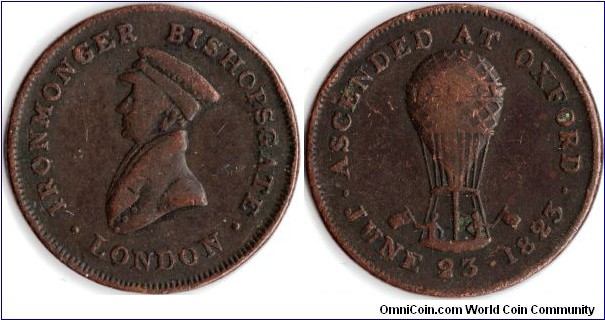
-
.....NOT a Swiss shooting medal, but a French one dated 1913. Nice, quite 3 dimensional, silver plated over bronze but it doesn't have that certain `je ne sais quoi', that the Swiss medals have.

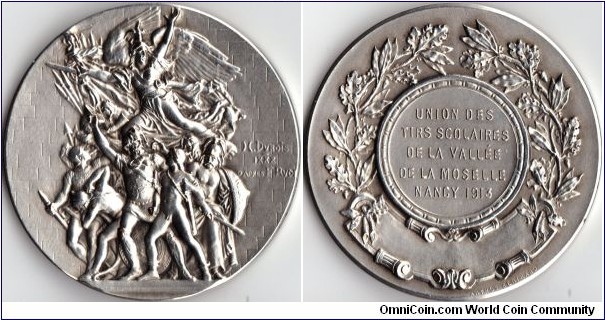
-
Latest additions:
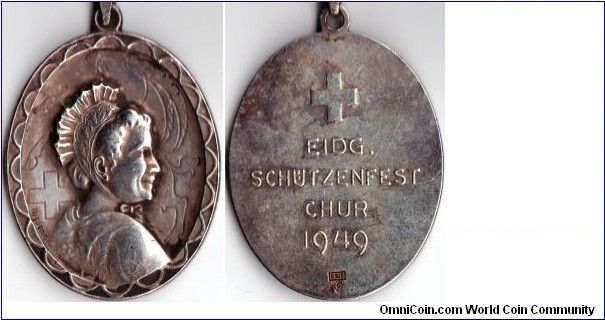
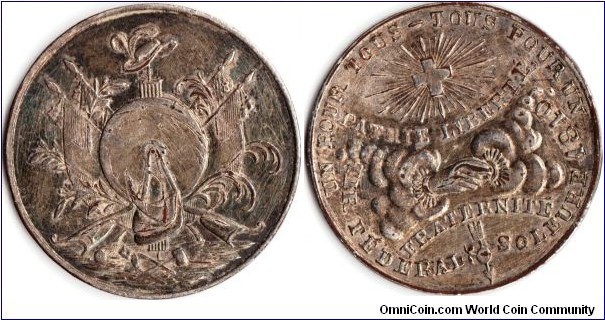
The first was issued for Chur (1949). The second is really tiny for a shooting medal (23mm) and was issued for the fest at Solothurn in 1840.
-
Looks more like an expresso machine, just kidding Ian, very nice early locomotive.
.......just pity that they didn't make the image of the locomotive a bit larger / more prominent on the medal. It does look like it would make a decent expresso or capuccino!

-
...and here's another 1560 jeton issued for Francis II of France, husband of Mary Queen of Scots.
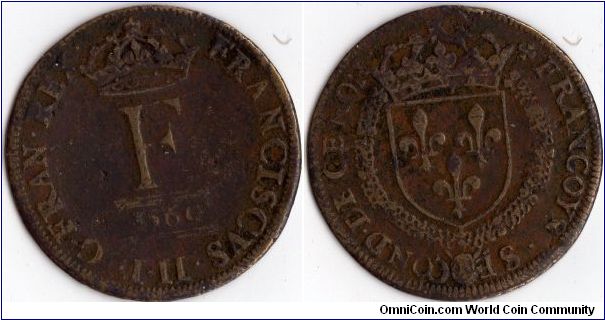
-
Tried but the scan just isn't picking up the date clearly. It is q 1564 though from Gelders, Spanish Netherlands.
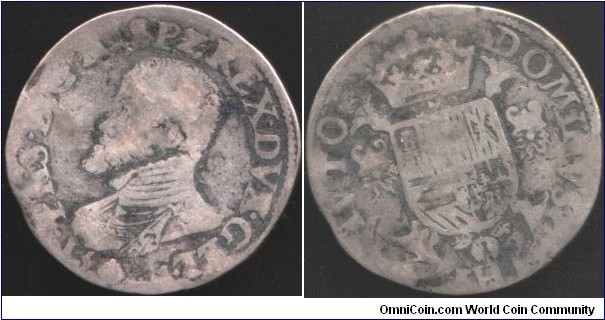
-
.....there's a train in the distance......

Medal issued for the inauguration of the St Etienne to Lyon line
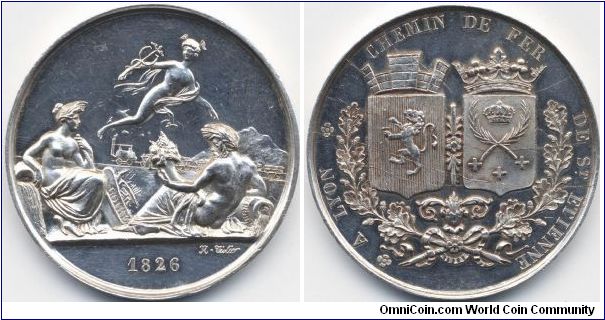
-
Hi Ian,
28.3 grams is the weight although I have no official documentation other than personal experience. Please keep in mind that variants such as planchet and scales can make the weight different than the 28.3 grams stated.
I hope this helps,
Rod
Many thanks for the data Rod. My one is bang on 28.3 grams, so I guess I can put my thoughts of it potential being a forgery to rest, and revel in my bargain buy.

Ian
-
My latest acquisition: Graubunder 4 Franken struck for the Federal Shooting festival at Chur in 1842.
Would appreciate any info regarding the correct weight of this item so i can satisfy myself as to its bona fides. i got it rather too cheap. It ticks all the right boxes though with regards to dimension, ring, and surface texture. Edge mark - Eintracht Macht Stark followed by a *.
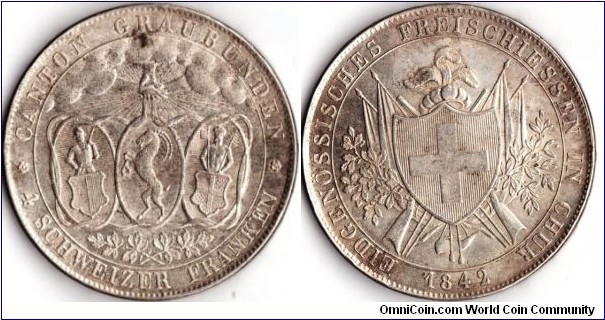
-
Almost but not quite 1567! Any chance someone has a definitive '67?
Hey.....You must have been sleeping when I posted the Mary Queen of Scots Ryal dated 1567 (post 1012 in this thread).
 The 1/4 Ducat brought us to 1566. The sol Parisis brings us to 1565. We are now looking for a 1564. I have one, but the date isn't too obvious from the poor scan I have of it. If no-one else can come up with a 1564 i'll try re-scanning to see if i can show the date better.
The 1/4 Ducat brought us to 1566. The sol Parisis brings us to 1565. We are now looking for a 1564. I have one, but the date isn't too obvious from the poor scan I have of it. If no-one else can come up with a 1564 i'll try re-scanning to see if i can show the date better. -
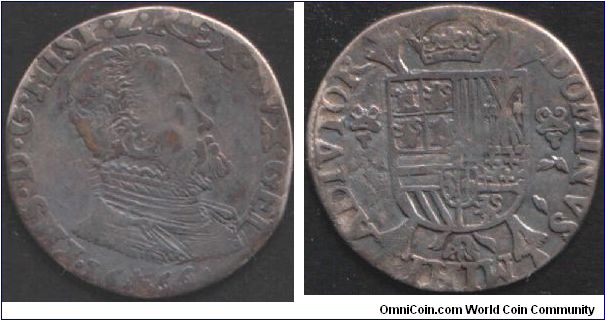 .
.Spanish Netherlands (Gelders) 1/4 ducat 1566
-
-
I have an entry for 1569, but nothing for 1570 that I can remember anyway.
I've already posted my 1570 (dated) ryal further up the line.
Ian
-
Here's a few more `train' ones........
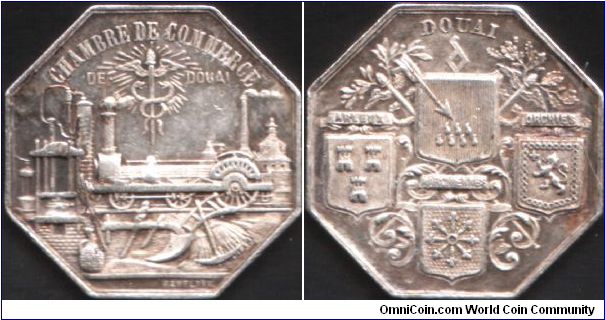
A jeton issued by Douai Chamber of Commerce and commemorating the Paris to Douai railway provided by the Compagnie des Chemins de Fer du Nord.
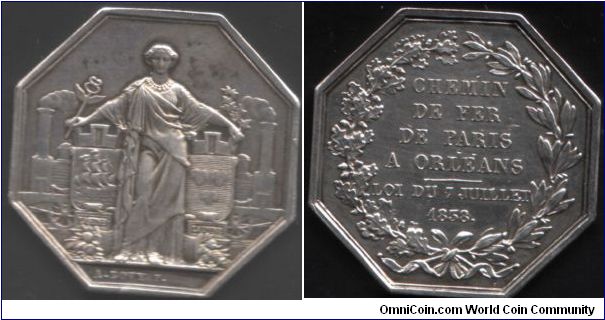
Jeton issued to commemorate the opening of the Paris - Orleans line
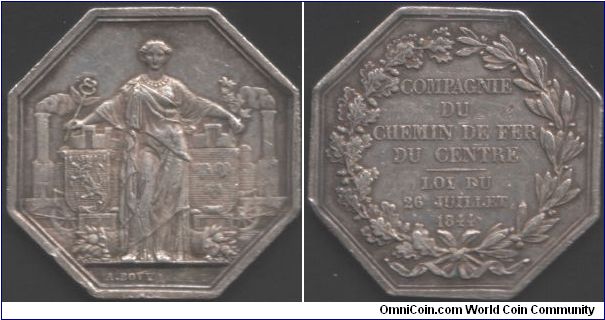
a jeton issued in 1844 to commemorate the opening of the line from Orleans to Chatearoux.
-
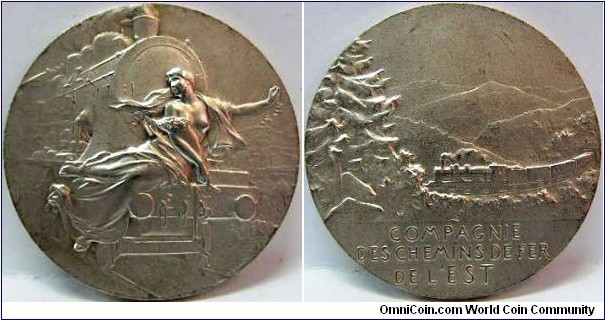
Sorry about that headlight business, on a more serious note, I think that the train depicted is La Brest to Paree, just a hunch though

That looks chest right to me.

-
The 231 was the 'Pacific', the Germans first showed interest in this design type of Loco in 1905, the French in 1906 but production was delayed till after WWI, though as early as 1909 some early ones were used in Alsace-Lorraine.
The COMPAGNIE DU CHEMIN DE FER DU NORD. use of the 231.
The 231 C Nord was a class of 4-6-2 (Pacific type) steam locomotive of the Chemin de Fer du Nord. It served in the North of France and Belgium. The first batch were built in 1923, and last remaining were retired from service in the 60's. These locomotives were widly known as super-pacifics due to their high performance, which made them famous even in Britain.
http://translate.google.ca/translate?hl=en...fari%26rls%3Den
Here's a pic of a 231 C which apparently saw service under a different guise as early as 1913 (?)
http://www.railfaneurope.net/pix/fr/steam/...LM_231_C_17.jpg
The train on the medal concerned looks to me to be more like a 230B (see image below) than the 231 C
http://www.railfaneurope.net/pix/fr/steam/...B114_Mulh01.jpg
Certainly the CF du Nord was operating long before the 231 C (Nord) came into existence in 1923, So it would be reasonable to assume (across a very wide chasm of ignorance I may add.....
 ) that they were using the 230 B 's and probably the 231 B's before they took delivery of 231 C's. The first record I can find of their purchasing a loco was the `Eugenie' which was built by Fairbairn for the 1855 Paris Expo.
) that they were using the 230 B 's and probably the 231 B's before they took delivery of 231 C's. The first record I can find of their purchasing a loco was the `Eugenie' which was built by Fairbairn for the 1855 Paris Expo.


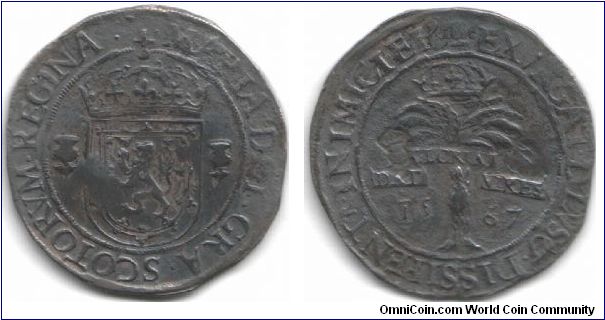
French `city view' jetons
in Exonumia (Tokens, Medals, etc) Forums
Posted
I don't know all that much about the town of Angers so your info re the cathedral being `de St Maurice' is much appreciated. Fascinating that you have spent some time there. Hopefully the memories are fond ones. It certainly sounds like it from your description of the stained glass and chants. Great that you have some jetons from the town. I'm looking forward to seeing them whenever you get the chance. The only other jetons I have from the town are of various mayors (1750's onwards) , including one of Stanislaus brother of Louis XVI and later known as Louis XVIII.